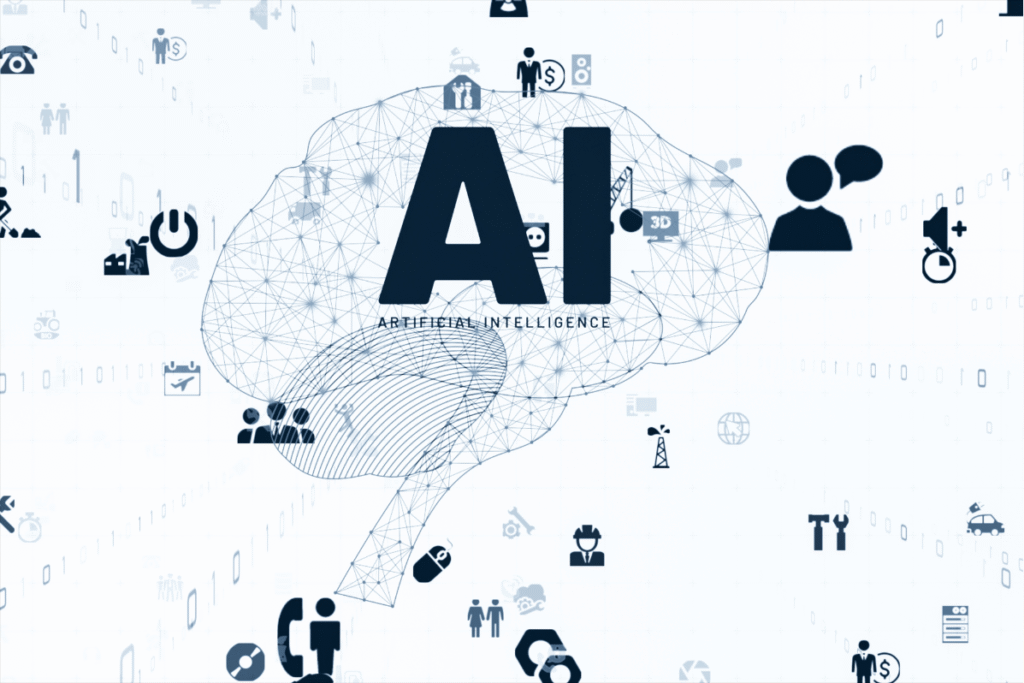Artificial Intelligence (AI) in business often gets talked about like it’s some sci-fi wizardry from the future. But here’s a secret: this technology has been around for decades. In fact, the core ideas behind modern AI were first explored way back in the 1940s and 1950s.
That means AI isn’t a brand-new miracle – it’s a veteran tool that’s been quietly evolving in the background. And the more you understand about how long AI has been here (and how it actually works), the less intimidating it feels to use it in your own business.

As an entrepreneur or business owner, you’ve probably seen a lot of hype about AI. It can feel overwhelming – almost mythical. On one hand, people talk about AI like it will solve all their problems overnight.
On the other, it might seem like an impossibly complex technology that only giant companies or PhD-level experts can handle. Both extremes create a pain point: small and mid-sized businesses are either anxious about being left behind or hesitant to jump in because AI feels too “high-tech” or risky.
Relax – AI Isn’t Alien Technology
Let’s clear the air: AI is not some alien mystery reserved for tech wizards. At its heart, AI is built on simple, logical principles. Think of it as a tool for pattern recognition and decision-making powered by data.
One famous AI pioneer put it bluntly that AI isn’t mystical at all – it’s basically math and computation. In other words, there’s no sorcery involved – just algorithms and statistics crunching away behind the scenes.
A lot of the fear around AI melts away once you realize this. The foundational concept of AI, the neural network, was inspired by the human brain – and first modeled in 1943. Researchers Warren McCulloch and Walter Pitts created a simple mathematical model of how neurons fire, planting the seed for what would become AI.
The term “Artificial Intelligence” itself was coined in 1956 during a famous workshop at Dartmouth College, where scientists boldly imagined machines that could “think” like humans. These origins show that AI was never about mystical powers; it was about mimicking human problem-solving with computers.
Fast forward to today, and AI has advanced tremendously – but the core idea is still using data to find patterns and make useful decisions. Modern AI can learn from millions of examples (thanks to faster computers and more data), yet it’s still following the logical rules and math its human creators gave it.
This means you don’t need to be a scientist to grasp the basics. If you can understand a trend in a spreadsheet, you can understand how an AI might recognize a trend in customer behavior or sales data.
It’s Already in Your Workflow (Yes, Really)
Here’s the irony: while AI might sound futuristic, it’s likely you already rely on it in your daily work. AI isn’t coming to your business – it’s probably already there. For instance:
- Email Filters: That spam filter in your inbox that separates junk mail from important messages? That’s AI at work, learning from examples of spam and legitimate emails to keep your communications clean.
- Search Engines: Whenever you Google something, AI algorithms are the ones scouring billions of pages to give you the best answers. They’ve learned what you’re likely looking for, so you get helpful results in seconds.
- Social Media Feeds: The posts you see on Facebook, LinkedIn, or Twitter aren’t just chronological – AI is deciding which content is most relevant or interesting for you, based on your past clicks and interactions.
- Voice Assistants: If you’ve ever said, “Hey Siri” or “OK Google” to get a quick answer or set a reminder, you’ve used AI. These assistants use natural language processing (an AI skill) to understand your voice and fetch information.
- Fraud Detection: Banks and payment platforms use AI behind the scenes to detect unusual transactions. When you get an alert about a suspicious charge on your credit card, an AI system likely spotted a pattern that didn’t fit your normal habits.
The list goes on – from the movie recommendations on your Netflix profile to the product suggestions on Amazon. The point is, AI is not a stranger; it’s woven into the software and services you use every day in your business.
According to a recent survey, 78% of companies say they use AI in at least one business function. Even among small businesses, adoption is accelerating. Some 40% of small businesses in the US were using AI tools in 2024, up from just 23% in 2023. So if you’ve been thinking that AI is only for the “big guys,” think again – your peers are jumping in too.

Seeing these everyday examples, one thing becomes clear: AI isn’t a shiny toy from the future – it’s a practical helper right now. Just like email and smartphones, AI is becoming a normal part of the business toolkit. And just like those tools, what matters is how you use it.
Using AI Wisely: Tips for Getting Started
Now that we’ve pulled back the curtain on AI, how can you embrace it wisely in your own business? Here are a few practical steps:
1. Start Small with a Specific Task.
Identify one area in your business that eats up a lot of time or is prone to human error. It could be answering the same customer questions, scheduling appointments, or sorting through data. Start by applying a simple AI tool to just that task – for example, use a chatbot to handle FAQs or an AI scheduling assistant to manage your calendar.
2. Choose User-Friendly Tools.
You don’t need to build an AI from scratch. Many AI-powered services are plug-and-play. Services like chatbots, content generators, or data analytics dashboards often come ready to use. Try out reputable platforms that have good reviews and see how they perform for you. (Many have free trials or free tiers, so you can experiment without big upfront costs.)
3. Involve Your Team and Learn Together.
If you have employees, get them on board with the new tool. Explain in simple terms what the AI does (and doesn’t do). By demystifying it for your team, you reduce fear and increase buy-in. Maybe run a short training or brainstorming session to explore the tool’s capabilities. You might even discover new ways it can help your business by having everyone understand it.
4. Keep the Human Touch.
AI can automate tasks and crunch numbers, but it doesn’t replace your human judgment or creativity. Use AI to augment your work, not take it over completely. For example, an AI might draft a marketing email for you, but you’ll still add your personal touch to ensure it aligns with your brand voice. Think of AI as your assistant, not your boss.
5. Monitor Results and Adapt.
Treat your introduction of AI like an experiment. Did the chatbot reduce the load on customer support calls? Is the new AI tool saving you 5 hours a week as expected? Keep an eye on key metrics (response times, costs, customer feedback).
If something isn’t working as anticipated, tweak the settings or try a different tool. AI systems often improve over time as they learn from more data, so give it a little time and fine-tuning to see the full benefits.
By following these steps, “AI in business” becomes less of a buzzword and more of a hands-on project you’re managing. You’ll build confidence as you go, and pretty soon using AI will feel as routine as using any other software in your workflow.
Partnering with AI for Growth
The big takeaway is that AI is a tool – a very powerful one, but a tool nonetheless. Success comes from partnering with that tool, not expecting it to work miracles on its own. The businesses seeing the best results with AI are those that integrate it thoughtfully into their workflows.
They focus on problems it can actually solve, set realistic goals, and then let AI do what it does best (speed up processes, generate insights, automate drudgery) while humans do what they do best (connect with customers, strategize, make creative decisions).
Rather than thinking of it as “man vs. machine,” think “man with machine.” For example, if you run an e-commerce store, you can use AI to analyze purchasing data and highlight trends – then you use those insights to create a better marketing strategy or improve inventory planning. The AI handles the heavy analysis, you handle the decision-making. Teamwork!
It’s also worth noting that AI in business is more accessible than ever. Not long ago, implementing AI might have required hiring expensive experts and investing in specialized software.
Now, thanks to cloud computing and ready-made AI services, even a solo entrepreneur can tap into advanced AI with a modest budget and an internet connection. The playing field is leveling, allowing smaller businesses to compete and innovate using the same technologies that big companies have.
No Miracles – Just Good Tools and Strategy
AI isn’t an overnight miracle from the future and that’s good news. It means you don’t have to wait for some futuristic leap, and you don’t have to be afraid of an unpredictable black box.
This “new” technology is built on decades of development and is already proven in countless practical applications. By understanding that history and recognizing AI in the tools around you, you can approach it with clear eyes and smart expectations.
So, go ahead and give that AI tool you’ve been curious about a try. Experiment in a small way and see what happens. You might find that it saves you time, cuts costs, or opens up new opportunities for your business. And you’ll definitely find that the mystique fades once you start using it – it will just become another helpful part of your workflow.
Ready to see how AI can fit into your business strategy? Contact me to discuss practical ways my virtual assistant services can help you implement AI solutions tailored to your needs.
The future of business is here today – with humans and AI working hand-in-hand to make things better. Embrace it wisely, and watch your business grow!



